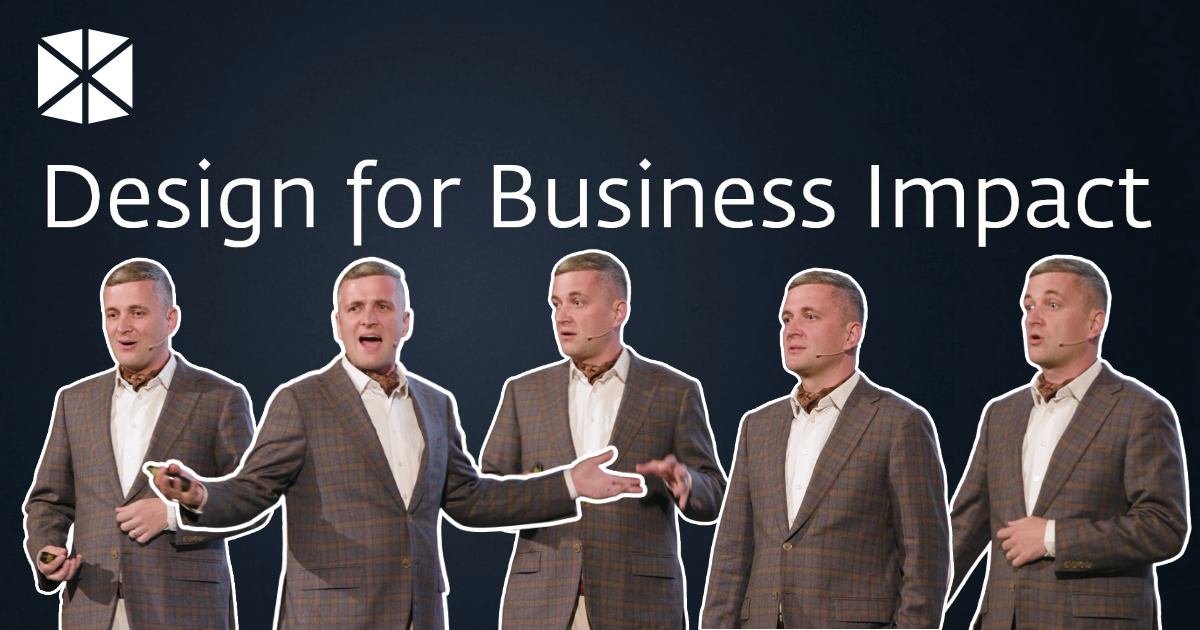
Jan Řezáč is an established web design consultant and supervisor who specialises in helping businesses to develop websites that outperform that of their competitors, he came to WebExpo to give us an insight into designing for business impact.
Something you will learn from Jan’s talk is that Jan is passionate about using hard evidence and detailed research in order to direct his teams’/clients’ approach to any project he’s involved with – getting the facts first and then finding out which problem needs solving.
From his own personal experience, Jan has learned that most “traditional” businesses rely heavily on the “Outputs” as opposed to the “Outcomes” and that, is where he believes most businesses are going wrong.
Goals change everything
One of the first things Jan discusses is goals. He goes into more detail in the talk video, but one of his main points is that when working on any project you should begin by discussing the goals first and foremost and setting a vocabulary around them within the team. According to Jan, these are the three different types of goals:
- Business outcomes/Impact – e.g. increased revenue
- Outcomes – e.g. items added to the cart or sign-ups for a newsletter
- Outputs – e.g. a product configurator or a product recommendation engine
Traditional vs next-gen businesses
Now that we know about the different types of goals, it’s time to decipher whether the goal at hand is typical of your “traditional” business, or of, what Jan describes as a “Next-gen” business.
In Jan’s view, a traditional business focuses its goals heavily on the outputs – for example:
- A CEO of a traditional company might ask: How many (websites) will we get for our money?
- Whereas a Next-gen business would ask: What outcomes will we get for our money?
So, you see, a Next-gen CEO would focus on the outcome, rather than the output.
Continuous improvement
As we already know, he recommends focusing your project on research first – so that you can find out what is needed or desired, or, what problem requires a solution before setting to work.
However, he believes that where a lot of businesses are going wrong is that; when they implement a new design, they are not doing so in a way that allows for continuous improvement.
Most CEOs think too short term – they begin a new project, watch the launch and then move on to the next. Wrong. Nothing is ever complete, and that’s the way that Jan works – the designs his company create are done so in a way that they can be ever-changing and always leave room for continuous improvement.
Jan’s top 3 changes (to the way he faces a new project):
- Recommendations. If you want to start focusing on outcomes – in the next project, talk about different types of goals and create a shared vocabulary around those goals. It’s a small step on a long journey but it’s an important one.
- Forget about the requirements at the beginning of the project and define the outcomes first. He advises that the first thing the team should do is gather all the outputs and then… forget about them for a while. Yes, that’s right. Forget about them because, it does not make sense to create them in the first place.
- Discovering delivery focus – focus at least the same amount of energy on the discovery, as you do on the delivery. And this is where Jan’s theory of continuous improvement comes in. It’s no good launching a project that is poorly executed. Nothing is ever complete, and it can always be improved upon.
Jan will tell you in his presentation that it’s normal to be focused on the outputs, and it’s going to be a hard habit to break when you’ve had your methods set in stone for such a long time, but – in a volatile, uncertain, complex and ambiguous (VUCA) world… it’s the next generation of companies that are focusing on the outcomes. That is what changes everything.
Watch the full video to find out more and see if Jan’s views and tips can help you during your next project.

